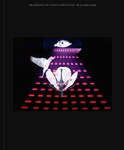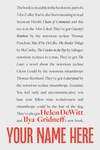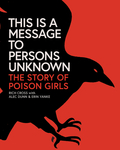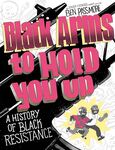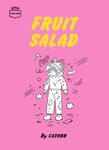
OUT OF STOCK!
Evocatively titled, Chrysanthemum Under the Waves can be seen, figuratively, as a haunted house. Its present is hollow and vacant, a shroud of neglect is draped over the loneliness that pervades. Its hey day was in the 1930s, but the hauntings extend even further back in time.
More prosaically, it is a collection of a series of independent – but thematically linked – “silent” comics pieces, that were created over a number of years. Most have previously appeared in anthologies such as NOW.
This 280-page softcover volume is printed in a monochrome of an almost black midnight plum which effectively communicates the permeating mood of one step beyond mood indigo.
Umber’s talent shines here as she demonstrates her artistry across a variety of mediums – ranging from pen and ink to block printing, but with a watercolors predominating – employing each to bring the reader into a variety of physical spaces and then draw them in further to reveal the emotional spaces within. Evoking memory-drenched loneliness in which sadness can tip over into despair revealing glimpses of a horror lurking beneath.
Each story seems to choose its own method of execution, in order to best bring out its particular truth. Ranging from the harsh scratchy pen & ink of “Rine” to the lush and wet watercolors of “The Witch”, an extended meditation which most strongly evokes the gothic, filled with nocturnal landscapes with flickering glimpses and intimations of ghosts, vampires, castles, all transpiring in near total darkness; a work that is more felt than read.
“Those Fucking Eyes”, “Rine”, "Intoxication" and “Chrysanthemum” evoke the 1930s and 1940s, with a clear nod to the visuals of classic studio Hollywood films of the era – and with an eye towards Katherine Hepburn, and Spencer Tracy – in a sequence of enigmatic narratives with occasional notes of Al Columbia.
Strong Edward Munch vibe permeates "The Devil Is a Hell of a Dancer” which incorporates an excerpt from a traditional Scottish ballad that dates to the 17th century, generally known under the title “The Daemon Lover” (but also as “James Harris” and "A Warning for Married Women”, among other variants). The figure of James Harris is referenced elsewhere in the work, serving as a motif, and so can be seem as functioning as somewhat of a thematic unifier.
“The Tooth”, an adaptation of a Shirley Jackson short story, has a film noir, Edward Hopper feel that works to evoke the fundamental loneliness of pain.
The overlapping woodblock prints of the closing piece, “The Rock”, which also have a bit of a Munch vibe, read as a short early silent film of a woman being rowed out to a rocky outcrop where she is left, alone.
You can get a good idea of what we're talking about by checking out this gallery of images from the book that well demonstrates the strength and diversity of Umber's artwork.
Taken as a whole, Chrysanthemum Under the Waves reads as a work of emotional catharsis in which all too present traumas are put at a temporal remove, through displacement onto archetypal and mythical pasts and therein æstheticized to process the pain and dissolve the grief... and step into the light of a new day.





